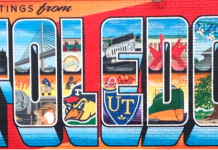Ever wondered about Kwanzzaa? Too shy to ask your friends and neighbors what’s it all about? Well here’s a little crash course on the widely observed holiday.
First things first: Kwanzaa is derived from the words Matunda Ya Kwanza meaning “First Fruits” or harvest in Swahili.
Kwanzaa is not a religious holiday. It’s more of a celebration of family, community, and culture. Kwanzaa is observed by many people of different faiths and is often done along side religious holidays such as Christmas and Hanukkah. Yes, you can celebrate Kwanzaa and Christmas, they’re not mutually exclusive.
Kwanzaa originated by a California State professor on 1966. It was after the horrible Watts riots that Dr. Maulana Karenga sought after a way to bring the Black community together. His research led him to focus on African first fruit harvest celebrations. Eventually he took aspects from those of the Zulu and Ashanti and created the basis of Kwanzaa.
There are 7 principles of Kwanzaa:
1. Umoja (Unity)
2. Kujichagulia (Self-determination)
3. Ujima (Collective work)
4. Ujamaa (Cooperative economics)
5. Nia (Purpose)
6. Kuumba (Creativity)
7. Imani (Faith)
These 7 principles are represented by a special candleholder called a Kinara. Families light one candle each day during this 7 day celebration. During this time families may also celebrate with storytelling, drumming, poetry reading, singing, dancing, and feasting. Here in Toledo, there has always been wonderful community events that incorporate all of this.
Gift giving is another part of the celebration. Traditional gifts include any handmade items, fruits, vegetables, educational games or books, or anything that commemorates the heritage.
Kwanzaa makes room for a greater appreciation towards diversity, heritage, and the richness of the African-American culture.
Let us know how you plan to celebrate!













Thanks for the refresher course!
You’re so welcome! Thanks for reading!